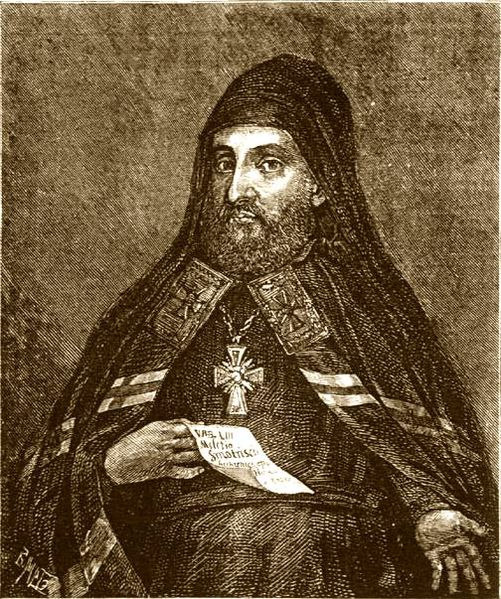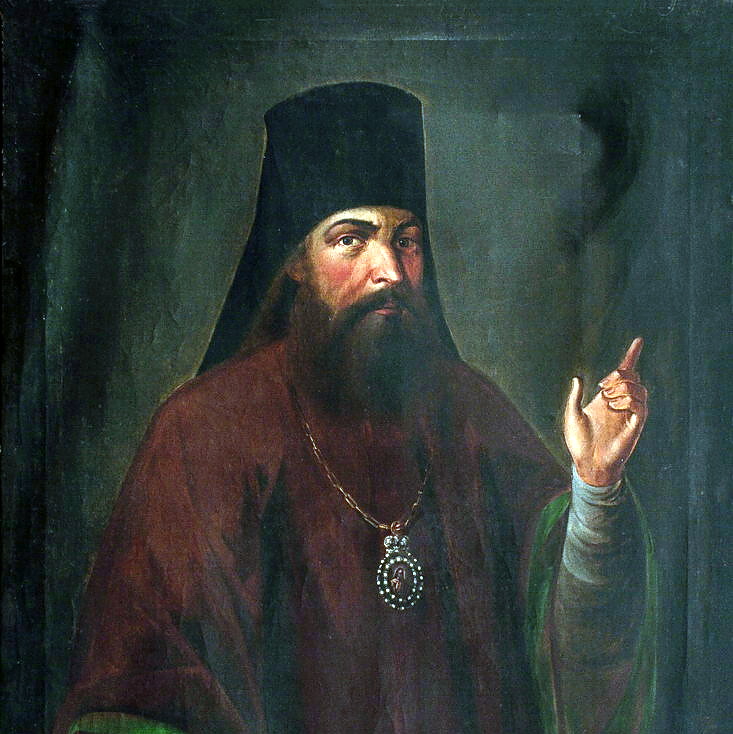(archive)
Ivan Hryhorovych-Barskyi
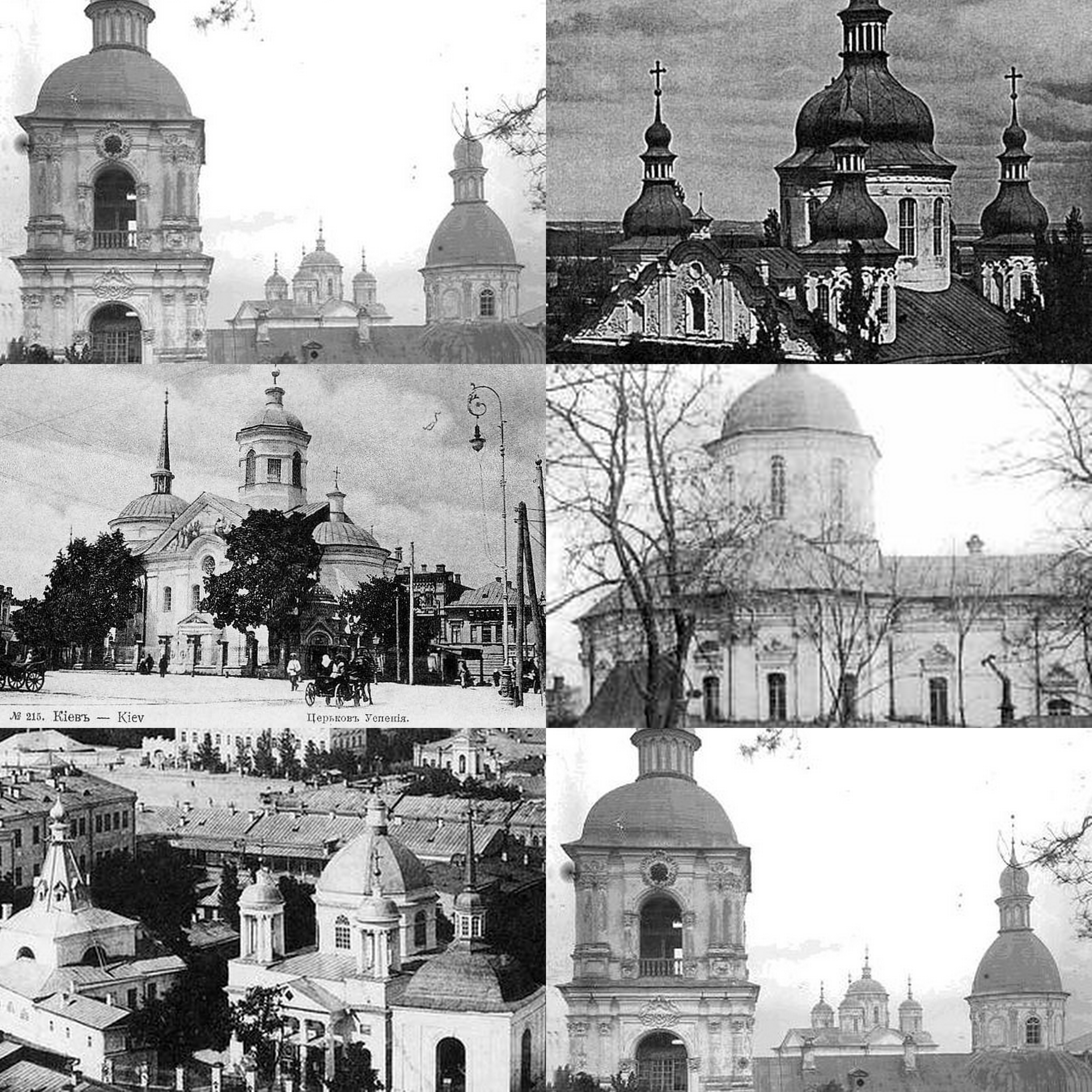
Ivan Hryhorovych Hryhorovych-Barskyi (1713, Kyiv – 10.09.1791, Kyiv) – a famous Ukrainian architect, the most prominent representative of the Ukrainian baroque style, a student of the Kyiv-Mohyla Academy, a younger brother of Vasyl Hryhorovych-Barskyi, a famous Ukrainian traveller and writer.
He was born into a family of Kyiv burghers the Hryhorovyches, whose family came from Bar in Podillya (hence the second part of the surname of both brothers). Up to 1710, their father lived in Kyiv in Pechersk and, according to Ivan, “had a merchant merchandise”; then he moved to Podil.
After studying at the Kyiv-Mohyla Academy in the mid-1720s — early 1730s, Ivan Hryhorovych-Barskyi served in the Kyiv Magistrate on various positions, including the charge of manors. According to his projects, a number of sacral, public, economic, and private buildings were built in Kyiv, as well as in Kyiv and Chernihiv districts. He also completed the construction and reconstruction of monastery and church complexes in Kyiv.
In the years 1748-1749 he designed and built a water fountain, part of which was a fountain with a pavilion-rotunda, known after its restructuring in the early 19th century called Samson.
To this day, the Church of the Intercession and the Church of Mykola Naberezhnyi, as well as the Cathedral of the Nativity of the Virgin and the house of the regimental office in Kozelets (nowadays)and the Cathedral of the Transfiguration of the Krasnohorsk Monastery in Zolotonosha, have been preserved in Podil in Kyiv.
In 2011, the National Bank of Ukraine issued the commemorative silver coin “The Hryhorovych-Barskyis Family” in the “Famous Families of Ukraine” series.
In addition to studying at the Kyiv-Mohyla Academy, Ihor Hryhorovych-Barskyi also led the construction of a brick bursa near the Dnieper, and a dormitory for poor students in 1778.
It was the last architectural creation of the master, which has survived to this day, albeit in a reconstructed form. The one-storey building was built on the former foundation of the burnt wooden bursa; it had thick walls, almost square small windows, an iron-covered roof, side wings, and arches.
Source: Kyiv-Mohyla Academy Reflected in Names: XVII-XVIII, 2001.
Read moreHryhoriy Skovoroda
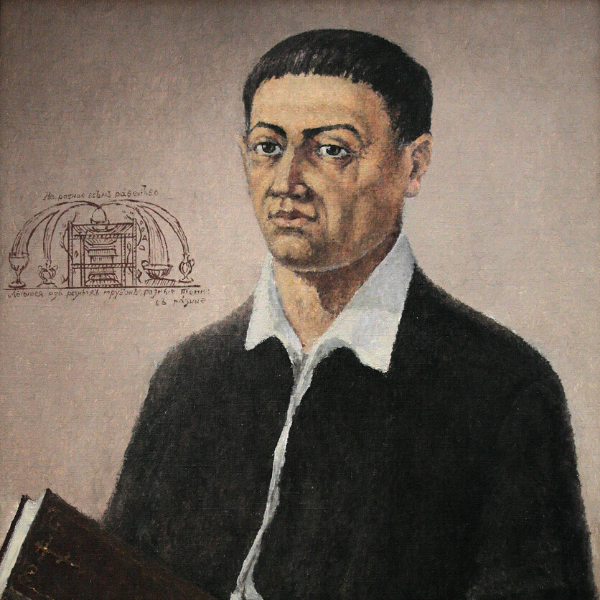
Skovoroda Hryhoriy Savych (11/22/1722, in the village of Chornukhy in Lubny Regiment, Cossack Hetmante, the modern-day town center of Poltava region – 29.10.1794, the village of Pan-Ivanivna of Kharkiv county, the modern-day village of Skovorodynivka of Zolochiv district of Kharkiv region) was an outstanding thinker, poet, translator, teacher, composer, the founder of Ukrainian philosophy, the first lay-philosopher, a graduate of the Kyiv-Mohyla Academy.
Born into a Cossack family. In the years of 1734-1741 he studied at the Kyiv-Mohyla Academy, reaching the second year of philosophy studies. In the years of 1741-1744 he was a singer in the court choir in St. Petersburg. In 1744-1750, as a member of the commission (a singer of the court church) on the procurement of wines for the imperial court in the Hungarian lands (Tokay Commission), he also visited Budapest, Vienna, Presbytery, Prague, and Halle for educational purposes.
Returning from abroad, he taught poetics at Pereyaslav College for a year and then continued his studies at the Kyiv-Mohyla Academy in the theology class.
In 1753-1759, by the recommendation of Metropolitan Timothy Shcherbatsky, he was a home teacher in the sergeant major’s family in the village of Kovrai of Pereyaslav Regiment. From 1759 till 1769, he taught poetics and Greek at Kharkiv College.
From 1769 until his death he lived mainly in Slobozhanshchyna, abandoning his career, monasticism, and his own home; it is at this time that his creative work was the most fruitful.
Skovoroda’s philosophical views are mainly referred to ethics, intertwined with the ideas of Platonism and Stoicism. He considered self-knowledge to be the main sense of human existence. He wrote philosophical treatises and dialogues in a mixture of the Church Slavonic, Ukrainian, and Russian languages; fables in Russian; and songs in Ukrainian.
Although during his lifetime the works of Skovoroda were distributed in manuscripts, the first publications appeared only after the thinker’s death. A complete collection of Skovoroda’s works appeared in 1973 in two volumes; however, it was not always satisfactorily published from the archeographic point of view (H. Skovoroda. Complete Collection of Works. In 2 volumes. Kyiv: Naukova Dumka, 1973. Vol. 1 – 532 p.; Vol. 2. – 576 p.). In 2011 was published Hryhoriy Skovoroda. The Complete Academic Collection of Works (Kharkiv-Edmonton-Toronto: Maidan; Canadian Institute of Ukrainian Studies Publishing House), ed. prof. Leonid Ushkalov.
Source: Kyiv-Mohyla Academy Reflected in Names: XVII-XVIII, 2001.
Read moreIvan Mazepa
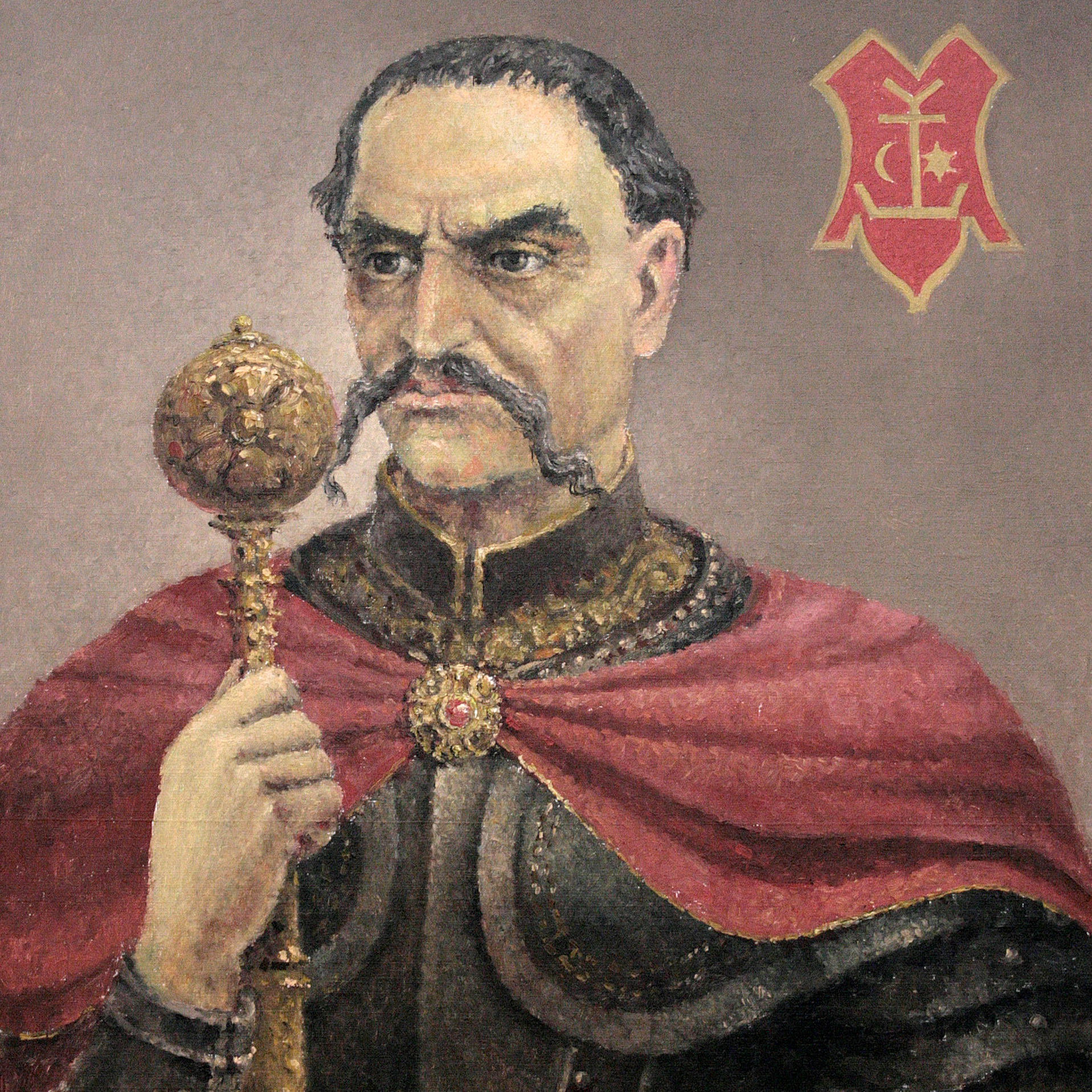
Mazepa Ivan Stepanovych of the Coat of Arms of Kurch (03/20/1639, a village on the Kamianka River, later named Mazepyntsi village of Kyiv Voivodeship, now Bilotserkivskyi district of Kyiv region — 21 / 22.09.1709, Varnytsya village, near Bender, Republic of Moldova) — a military man, politician, statesman, Hetman of Zaporizhia Army, patron of culture and education.
A descendant of the Mazepa-Kolyadinsky noble lineage on the paternal line and of the ancient Mokievsky noble lineage on the maternal line.
He studied at the Kyiv-Mohyla Academy approximately in 1650-1657, as well as in some of the institutions of the Commonwealth, presumably at the Jesuit College. While serving for the Polish king, he visited Holland, Italy, France, and Germany, where he studied, in particular, artillery.
He gained considerable military and diplomatic experience at the court of the Polish king, leaving his service there in 1663. From 1669 he served for Hetman Petro Doroshenko and afterwards for Ivan Samoilovich. In 1687, with the consent of Moscow, he was elected hetman.
As a result of the defeat of the troops of the Swedish King Charles XII and Mazepa in the battle of Poltava on June 27, 1970, the hetman, together with the remains of his troops, left Ukraine. He died in 1709 in the village of Varnytsia near Bendery town, and in the spring of 1710 his body was moved to the town of Galati (now Romania); later the tomb was destroyed.
I. Mazepa’s hetman period was marked by a rapid development of Ukrainian culture, education, and art. With his support, temples were erected, books were printed, and the Chernihiv College was opened.
The Kyiv-Mohyla Academy, in which the hetman studied, was under his special patronage. Mazepa financially supported the construction of a needed (due to a significant increase in the number of students) academic building (the so-called Old Academic, or Mazepa’s Building), and earlier – the stone Epiphany Cathedral on the site of the wooden Epiphany Church – the main temple of the Kyiv Brotherly Epiphany monastery (destroyed by the Soviet authorities in 1935).
Every year, the hetman provided financial grants to the students-bursaks. In addition, Mazepa supplemented the library of the Academy and participated in solemn academic meetings. With his support, the Academy received royal certificates, partly related to its legal status and property. The hetman also supported the Kyiv-Mohyla students. This charity work was not only appreciated by the academic corporation but also called for another, temporary name of the institution: the Kyiv-Mohyla-Mazepa Academy.
Source: Kyiv-Mohyla Academy Reflected in Names: XVII-XVIII, 2001.
Read moreRaphael Zaborovskyi
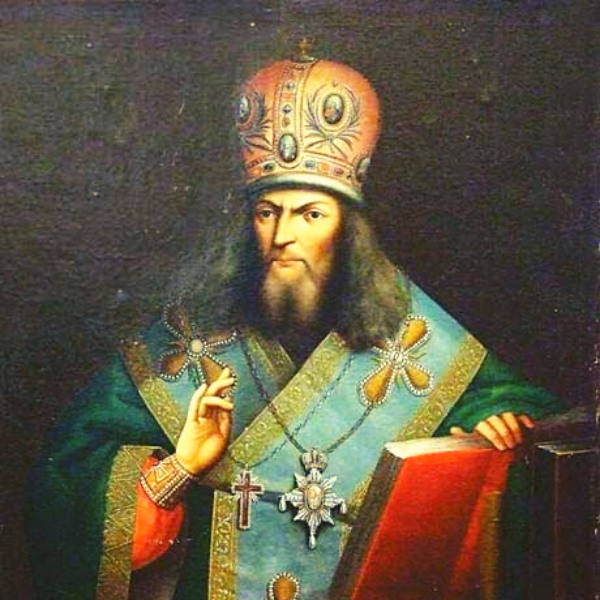
Raphael Zaborovskyi (the birth name Mykhailo) (1676, the city of Zboriv, the Lviv Land of the Ruthenian Voivodeship, now: the district center of Ternopil region – 10/22/1747, Kyiv) is an ecclesiastical and educational figure, Metropolitan of Kyiv, Halych, and Lesser Russia, an alumnus of the Kyiv-Mohyla Academy and its protector and philanthropist. He came from a noble family.
fter Jesuit College, he continued his studies at the Kyiv-Mohyla Academy, where he advanced to the philosophy class and attended lectures by professors Joasaph Krokowski and Stefan Jaworski.
In 1770, together with S. Jaworski, he moved to Moscow, where he taught rhetoric at the Moscow Slavic-Greek-Latin Academy. He was later appointed Chief Hieromonk of the Russian Navy, in 1723 he was appointed Archimandrite of the Tver Trinity Monastery of Kolyazin, and in 1725 he was ordained Bishop of Pskov, Izborsk, and Narva.
In Pskov, he established a Slavic-Latin school, where the graduates of the Kyiv-Mohyla Academy taught. In 1731 he was nominated the Archbishop of Kyiv, Halych, and Lesser Russia.
After returning to Kyiv, he helped to build temples, monasteries, and the Kyiv-Mohyla Academy. It was then that the buildings were restored and erected that are now included in the historical and cultural monuments of the UNESCO World Heritage List, in particular the bell tower of the Kyiv-Pechersk Lavra, the Metropolitan’s house in the monastery of St.Sophia, as well as the stone walls and the gate (now known as “Zaborovsky Gate”).
It was Zaborovsky who consecrated the site for the erection of the new St. Andrew’s Church. In 1743, the Metropolitan status was returned to the Kyiv department, and Raphael retrieved the rank of Metropolitan of Kyiv, Halych, and Lesser Russia. He is buried in St. Sophia Cathedral.
From the time of his return to Kyiv until his death, the Kyiv-Mohyla Academy was under the constant and diverse care of Raphael Zaborovsky. In 1731, with his support, the construction of the Old Academic (Mazepa’s) building began, for which the bishop invited the German architect J.-G. Shedel to Kyiv.
The educational building was expanded as a result of the second floor superstructure with the Congregational Hall, and the Annunciation Congregational Church was added to the building. The deeds of the Metropolitan, including those related to the architectural monuments and the educational building, are reflected in an engraving of 1739 made by a Mohyla student, engraver and painter Hryhoriy Levytskyi-Nos, and presented to Raphael Zaborovskyi by the Academic Corporation.
The further construction of the Kyiv-Mohyla Academy, the restoration and erection of its buildings were not only initiated by Raphael Zaborovskyi but also implemented at his expense. In addition, the Metropolitan patronized the poorest students, sent capable students to study abroad, petitioned the Academy for secular and ecclesiastical authority, and encouraged others to financially support professors and students. He also handed over, as Petro Mohyla had done before, books to the Mohyla library.
In 1734, Raphael drafted the earliest known Instruction for the Academy under the name “Leges academicae docentibus et studentibus observandae” (“Academic Rules for Professors and Students”). The document outlined the basic roles and principles of the Academy’s activities, defined the duties of students and professors and the rules for their behavior.
Under the patronage of Zaborovskyi over the educational institution, the teaching of the Greek and Hebrew languages was resumed here and the teaching of German was introduced.
Raphael Zaborovskyi was one of the most prominent benefactors of the Kyiv-Mohyla Academy, and his support and attention to streamlining and improving the teaching, learning, and living conditions of students echoed the activities of Petro Mohyla. The recognition of the merits of both Metropolitans and the appreciation of the academic community were reflected in the names of the institution: the Kyiv-Mohyla Academy and Kyiv-Mohyla-Zaboriv Academy.
Source: Kyiv-Mohyla Academy Reflected in Names: XVII-XVIII, 2001.
Read morePetro Mohyla
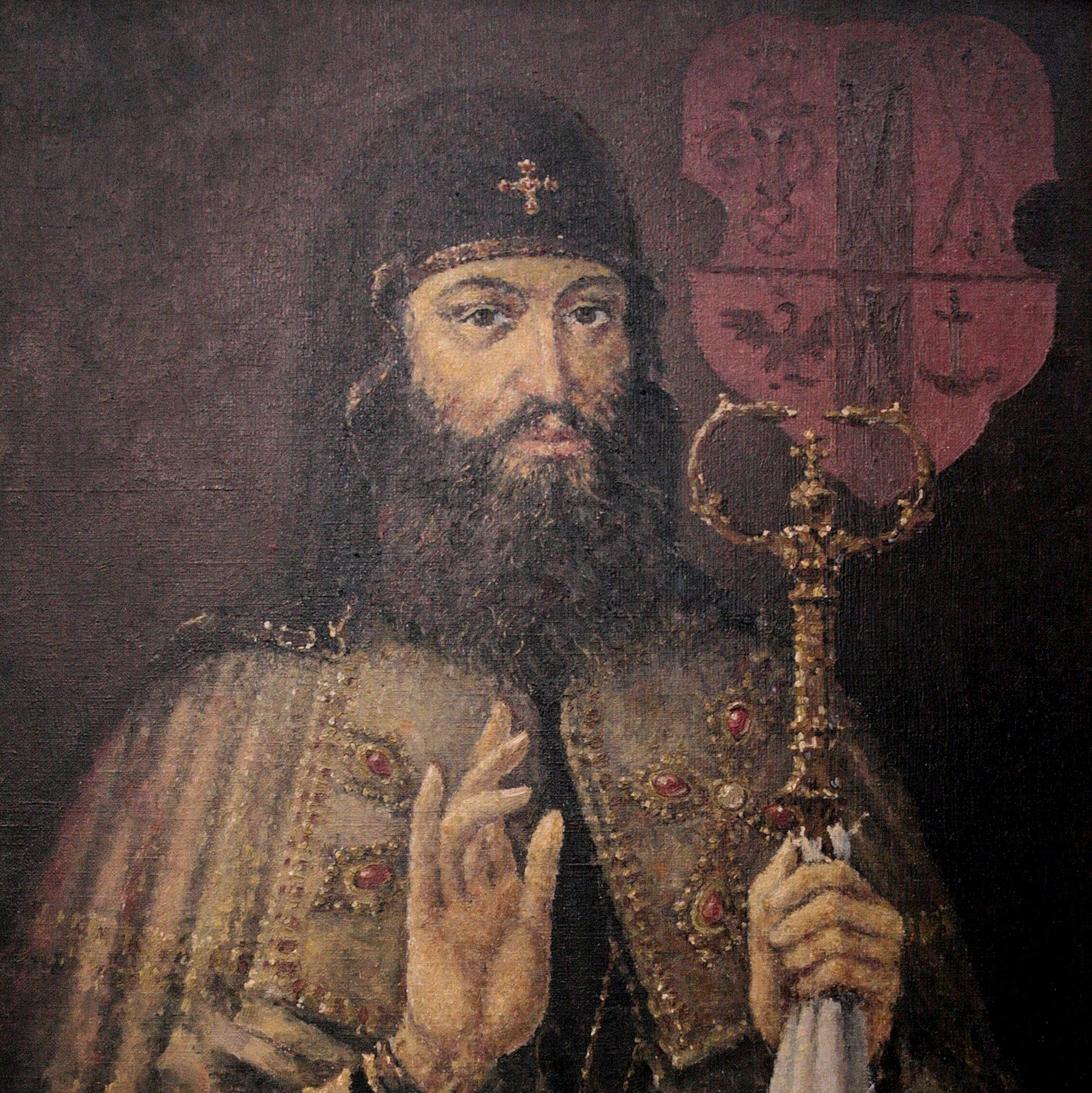
Petro Mohyla (01.10.1597, Suceava, Moldova – 01.01.1647, Kyiv) – a political, ecclesiastical, and educational figure, writer, Archimandrite of the Kyiv-Pechersk Lavra, Exarch of the Patriarch of Constantinople, Metropolitan of Kyiv, Halych and all Rus, patron and philanthropist of the Kyiv-Mohyla Collegium and the Kyiv Epiphany Monastery. He came from an ancient Moldovan boyar Orthodox lineage. He studied at the Lviv Brotherhood School, the Zamość Academy (Zamość, Poland), and at educational establishments in Holland and Paris. Returning to the Commonwealth of Poland, he served in the Polish army, participated in the battles under Ţuţora (1620) and Khotyn (1621). Under the influence of Metropolitan Job Boretskyi, he chose a church career, taking a monastic vow in the Kнiv-Pechersk Lavra in 1625. In 1627 he was consecrated to the Archimandrite of Kyiv-Pechersk Lavra with the support of Job Boretskyi and influential Orthodox noble families. In 1631, by the spiritual will of Job Boretskyi, Nohyla became a member of the Kyiv Brotherhood, its patron and sponsor, as well as that of the Kyiv Epiphany Monastery and the Kyiv Brotherhood School.
In 1632, on the basis of the union of the Kyiv-Pechersk Lavra School and the Kyiv Brotherhood School, he founded a collegium, modelled after Jesuit schools. He constantly provided financial assistance to the Collegium, its students and professors, as well as the monastery, and sent students to study abroad at his own expense. For the needs of the monastery and the collegium, he donated his own village Pozniaky (now a residential area of Kyiv). In 1633 he was elected Metropolitan of Kyiv, Galicia and all Rus. He built temples and monasteries, established educational institutions, organized the liturgical practice, published the liturgical literature. He is the author and compiler of 19 works of the church-theological, polemical, educational, philosophical, and moral character. He is buried in the Assumption Cathedral of the Kyiv-Pechersk Lavra.
In 1996, on the 400th anniversary of his birth, Petro Mohyla was canonized by all 15 autocephalous Orthodox churches and proclaimed saint. In 1996, the National Bank of Ukraine issued a silver anniversary coin in the series “Prominent Personalities of Ukraine”, dedicated to the 400th anniversary of Petro Mohyla.
According to Petro Mohyla’s spiritual will, the Kyiv-Brotherhood Collegium was the first heir to all his property, including all real estate, 81 thousand Zloty, jewels, metropolitan clothing and the library. Petro Mohyla’s book collection was once one of the largest libraries in the Ukrainian territories and included works by Roman philosophers and writers, Western European scholars and theologians, Old Rus chronicles, documentaries, Polish chronicles, and much more. The private library of Petro Mohyla started the library of the Kyiv-Mohyla Academy and established the tradition of donating books for the needs of the university. The first library of the Kyiv Brotherhood Collegium was located on the second floor of the Refectory built by Petro Mohyla.
During the life of Petro Mohyla, the Kyiv Brotherhood Collegium was named the Kyiv-Mohyla Collegium. The successor to the collegium, the Kyiv-Mohyla Academy retained the name of its founder in its name. The Academy was re-established in 1992 under the name “The National University of ‘Kyiv-Mohyla Academy’”and is named after Petro Mohyla. The highest award of the NaUKMA for significant contribution to the development of the national education, science, and spirituality is the Peter Mohyla Medal.
Source: Kyiv-Mohyla Academy Reflected in Names: XVII-XVIII, 2001.
Read moreVasyl Hryhorovych-Barskyi
Hryhorovych-Barskyi Vasyl Hryhorovych (01/01/1701, Litkovychi village, Kyiv region-07/10/1747, Kyiv) was a traveler, writer, translator, artist, and an alumnus of the Kyiv-Mohyla Academy. He was born into a family of Kyiv townspeople, originally coming from Bar in Podillya.
Despite his father’s critical attitude to academic education and his refusal to educate, Hryhorovych-Barskyi, with the support of his mother, as he claimed, began his studies at the Kyiv-Mohyla Academy. He studied in the Academy from 1715 to 1723, completing the class of rhetoric. Then he studied briefly at the Jesuit College in Lviv.
From 1724 to 1747 he traveled through Hungary, Bulgaria, Austria, Romania, Greece, Italy, Cyprus, Macedonia, Palestine, Syria, Arabia, and Egypt, describing the life, customs, and culture of the lands and countries he had visited. During his travels, in 1734 he took a vow to become a monk, lived in monasteries most revered for Eastern Christianity, and got acquainted with their libraries.
At the invitation of the administration of the Kyiv-Mohyla Academy, Hryhorovych-Barskyi was to teach there Greek. However, shortly after his return to Kyiv in 1747, he died. He was buried in the Kyiv Epiphany Monastery near the Epiphany Cathedral.
During his 24-year journey, starting with his departure from Kyiv to Lviv and ending with his return from his last stay in Athos, Hryhorovych-Barskyi kept travel notes in which he recorded his impressions, everything that happened to him, and what he saw and experienced. The detail and comprehensiveness of the descriptions testify to the author’s observance, desire to understand the way of life and culture of different peoples. The value of the notes is that in addition to the descriptions, they contain original drawings, plans for about 150 landscapes, architectural complexes and individual structures.
After the death of Hryhorovych-Barskyi, his notes were very popular and were distributed in manuscript form. They were first published over 40 years after the author’s death under the title “Of pedestrian Vasiliy Grigorovich Barsky-Plaki-Albov, a native of Kiev, a monk of Antioch, travels to holy places located in Europe, Asia, and Africa … written by himself, etc. ”(St. Petersburg, 1788).
The notes were released in modern Ukrainian in 2000 under the title “Travels in the Holy Places of the East from 1723 to 1747” (K., 2000).
Vasyl Hryhorovych-Barskyi traveled to three parts of the world (Europe, Asia, Africa) and described local customs and life on his own initiative, his own resources, often being endangered. The young man’s desire for learning was strengthened and developed under the influence of his studies at the Kyiv-Mohyla Academy, where not only did he become acquainted with historical and geographical works but also were popular student journeys.
Source: Kyiv-Mohyla Academy Reflected in Names: XVII-XVIII, 2001.
Read moreGiselle Innocent
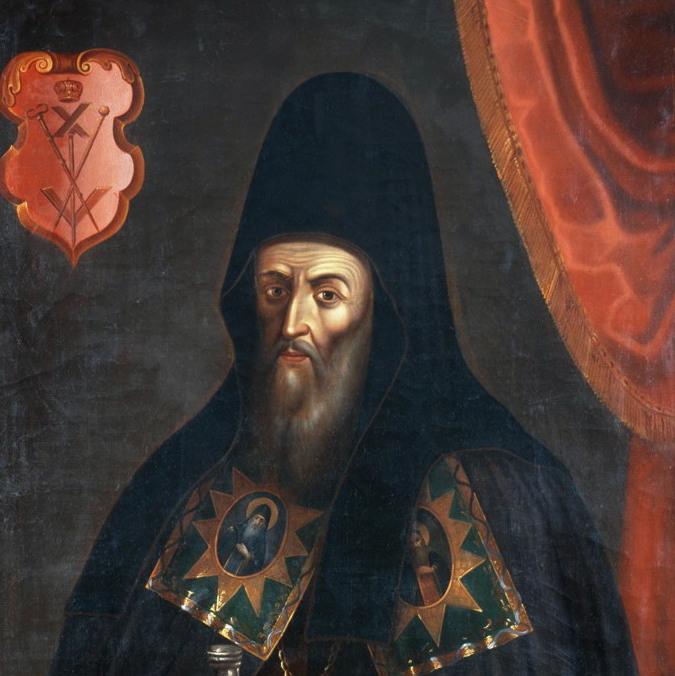
Giselle Innocent (b. 1600, Prussia – 11/18/1683, Kyiv) was a church figure, theologian scientist, philosopher, historian, Archimandrite of the Kyiv-Pechersk Lavra, student, professor and Rector of the Kyiv-Mohyla Collegium. He came from a Protestant family in Prussia. He presumably studied at Zamość Academy (now Zamość, Lublin province, Poland), at Königsberg (now Kaliningrad, Russia) and in Rostock (Germany). After moving to Kyiv, he converted to Orthodoxy and accepted monasticism. After studying at the Kyiv-Mohyla Collegium, he was sent by Petro Mohyla to study abroad. Returning to Kyiv, he held the positions of teacher, professor of philosophy at the Kyiv-Mohyla Collegium. Petro Mohyla saw Gisel as his successor and trustee of the Kyiv Collegium. From 1646-1650 he was Rector of the Kyiv-Mohyla Collegium and Rector of the Kyiv Epiphany Bratskyi Monastery. In the years of 1646-1647, for students of the Kyiv-Mohyla Collegium, Gisel wrote a textbook on philosophy, Opus totius philosophiae, which included the basics of dialectics, logic, physics, and metaphysics. In the years 1656-1683, Gisel was elected Archimandrite of the Kyiv-Pechersk Lavra. He actively supported scholars, including Lazar Baranovych, Ioanykiy Galiatovskyi, in their scholarly and literary work, contributing to the publication of works in the printing house of the Kyiv-Pechersk Lavra. He was the editor of “Synopsis”, or the Brief Collection from various chroniclers about the origin of the Slavic-Russian people,” the first scientific textbook of the national history. Gisel took an active part in the ecclesiastical and political life of Ukraine, negotiated with representatives of the Russian Tsar about the status of the Ukrainian church after the conclusion of the Ukrainian-Moscow treaty in 1654. He is buried in the Assumption Cathedral of Kyiv-Pechersk Lavra.
Source: Kyiv-Mohyla Academy Reflected in Names: XVII-XVIII, 2001.
Read more